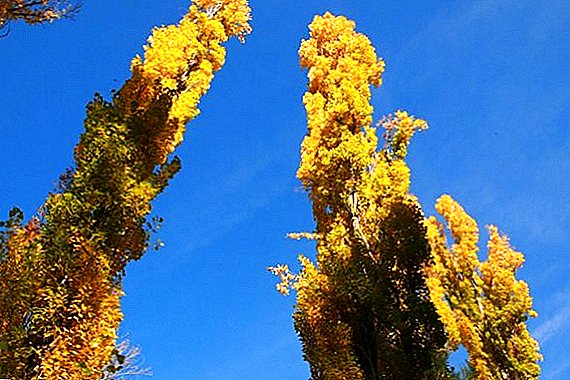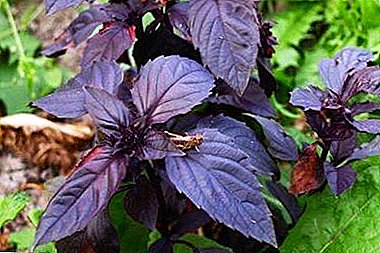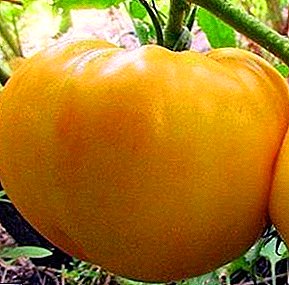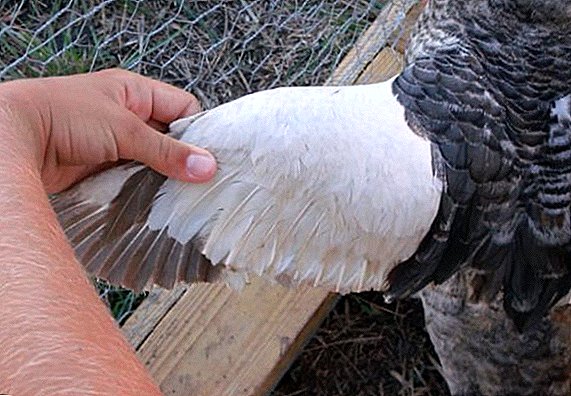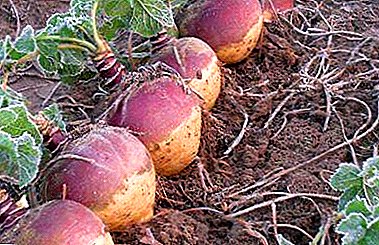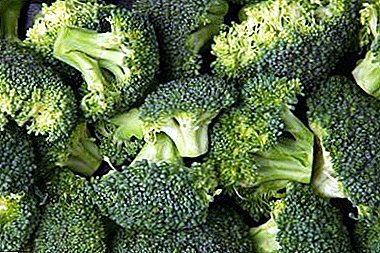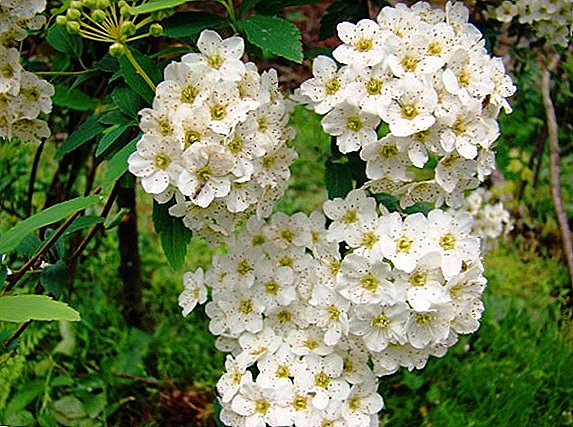 There is nothing more beautiful than having a garden on your property, at least a small garden that is stunning in its beauty. Along with the usual cherries, apples and apricots, more and more people are striving to bring some kind of diversity, a kind of "highlight" that will bloom for the joy of the owner and the envy of the neighbors.
There is nothing more beautiful than having a garden on your property, at least a small garden that is stunning in its beauty. Along with the usual cherries, apples and apricots, more and more people are striving to bring some kind of diversity, a kind of "highlight" that will bloom for the joy of the owner and the envy of the neighbors.
One of such plants can be easily attributed to Vangutta spiraea.
Ornamental shrub spirea Wangutta - a luxurious and extremely unpretentious plant, which is very often used by gardeners to decorate the cottage and garden plots, as well as parks. Shrub flawlessly established itself in a single planting and group planting, even with bushes and trees of other species.
Individual varieties of spirea differ in size, flowering period, life expectancy, speed of cultivation, as well as the shape and color of the inflorescences. According to the majority, namely Spirea Wangutta, planting and caring for which does not cause any trouble, is the most beautiful and suitable for decorating his plot.
Spirey Vangutta: description
This shrub, despite its beauty and unpretentiousness, is not so well known among the gardeners of our country, however, those of them who still encounter Vangutta spiraea, irrevocably fall in love with it. That is why it is necessary to understand what Vangutta spirea is, which is described below.
The ornamental shrub of this variety was bred in the middle of the XIX century as a hybrid based on two varieties already known at that time. Due to its impressive size (up to 2 meters in height and diameter), the shrub involuntarily attracts the eye. In addition, the spirea Vangutta, when flowering, is covered with lush white flowers, highlighting the bush unique beauty among other plants. 
From the abundance of flowering wisps, as a rule, the shoots of the bush tend to the soil, forming sweeping arc-cascades. The bush begins to bloom in late spring - early summer and lasts for 2-3 weeks. There are frequent cases when the spirea Vangutta after flowering in spring blooms a second time closer to the end of summer, but it is worth noting that the second flowering is not so abundant and beautiful. It is noteworthy that the spirea can be planted in apiaries, because the bees willingly pollinate the plant and feed on its nectar.
Important! Spirea Vangutta refers to plants that prefer an abundance of sunlight, but this shrub easily tolerates a long shadow, only slightly slowing down in growth rates.The shoots of the shrub are quite long and have a characteristic dark brown color. White flowers are quite small, but they cover all branches tightly, giving them a noticeable volume. In addition to the classic color, now actively displayed varieties of varieties with a wider color gamut.
Did you know? At the end of the XIX century, botanists were able to get Vangutta spirea with white five-petal buds. Today it is already possible to meet this shrub with pink and terry flowers and foliage of a decorative form and color.

Features landing spirea Wangutta at their summer cottage
Wangutta is quite unpretentious in the care and cultivation, however, as is the case with other garden shrubs and trees, the main, predetermining result stage, is planting a spirea in open ground. Therefore, before you grow a spirea in the country, you should take into account all the recommendations regarding the choice of location and landing technology.
Lighting choice: where to plant Vangutta spirea
Spirea is quite dependent on the abundant sunshine. Ensuring this condition allows the shrub to bloom actively and abundantly. It is noteworthy that the plant also suffers a slight darkening, slowing down in growth, but not dying, like other sun-loving bushes. But once you need to understand that flowering will be weak and will last for a short time.
There are no preferences regarding other factors in choosing a landing site. because the ornamental shrub spirea Vangutta perfectly tolerates any neighborhood.
What should be the soil for planting
 Like other members of the species and family, Wangutta spiraea prefers mostly fertile, loose soil and organized drainage. It is very important that the soil has an acidity of not more than 7 units. The best way to create suitable conditions for growing this shrub is to prepare the soil yourself and add component fertilizers to it.
Like other members of the species and family, Wangutta spiraea prefers mostly fertile, loose soil and organized drainage. It is very important that the soil has an acidity of not more than 7 units. The best way to create suitable conditions for growing this shrub is to prepare the soil yourself and add component fertilizers to it.
The best composition of the soil - a mixture of turf land, sand and peat in a ratio of 2: 1: 1, respectively. If it is not possible to make a similar composition or it is simply irrelevant, then it is enough to add peat or sand separately to the existing soil. In all cases, without exception, before planting the Spirea Wangutta, it is necessary to richly feed the soil of the landing pit with mineral and organic fertilizers.
Did you know? In specialized stores are offered ready-made mixture of soil for planting ornamental plants. This not only greatly simplifies the task and saves time, but also guarantees a positive result.
How to plant a spirea Vangutta in the garden
 Proper planting of the shrub largely determines not only the growth rate, the flowering activity, but also whether the spirea will take root in the chosen place. As mentioned earlier, Vangutta, although one of the undemanding plants, still has its preferences regarding soil quality and lighting. Therefore, those gardeners who decided to grow Vangutta's spiraea and wondering how to plant and care for it should know that the key to success lies in choosing the right place for planting, selecting a seedling and observing planting technology.
Proper planting of the shrub largely determines not only the growth rate, the flowering activity, but also whether the spirea will take root in the chosen place. As mentioned earlier, Vangutta, although one of the undemanding plants, still has its preferences regarding soil quality and lighting. Therefore, those gardeners who decided to grow Vangutta's spiraea and wondering how to plant and care for it should know that the key to success lies in choosing the right place for planting, selecting a seedling and observing planting technology.
Selection of seedlings and soil preparation
Choosing a sapling of this ornamental plant, you should pay careful attention to the state of its root system, because it is this factor that determines the resistance of the spirea and the duration of its life.
The roots must be strong, without flaws and damage. In addition, an important role is played by their number - the more branches, the faster Vangutta will take root in a new place.
The branches of the shrub should be smooth, not have cracks. They should show small buds.
Important! If the purchased seedling has an open root system, it should be visually examined, after which the damaged areas should be removed. In the same way it is necessary to shorten the excessive length of the roots (no more than 20 cm). It is important that the cuts are made evenly and accurately. After trimming the roots, check and remove the damaged upper shoots.
 The final stage of sapling preparation for planting in open ground is keeping them in an aqueous solution of fertilizers. The daily stay of the seedling in such water significantly strengthens it and increases its resistance.
The final stage of sapling preparation for planting in open ground is keeping them in an aqueous solution of fertilizers. The daily stay of the seedling in such water significantly strengthens it and increases its resistance.The planting pit for spirea should be approximately equal to the total size of the root system and have a depth of about 50 cm. As a rule, the most optimal size is 50 x 50 x 50 cm. Soil preparation consists primarily in loosening it, cleaning it from roots and weeds, and fertilizing and subsequent watering. In order for the bush to settle down faster, you can add peat or sawdust to the pit.
Important! The size of the landing pit is better prepared individually for each bush, given the dimensions of the root system. At the time of planting the bush in a hole on each side from the root to the wall should be at least 5-7 cm.
The scheme of planting seedlings spirea Wangutta
Often gardeners wonder when to plant Wangutta spiraeus. It is advisable to note that the planting in open ground can be made both in spring and autumn, and it is better to do this when buds are either bloomed or the foliage completely falls.
 Spirea Wangutta white is planted in a previously prepared (loosened and fertilized) planting pit. Having carefully arranged the root system of the shrub at a depth of 20-30 cm, the cleaned black soil, sawdust, peat, and black soil again are filled up.
Spirea Wangutta white is planted in a previously prepared (loosened and fertilized) planting pit. Having carefully arranged the root system of the shrub at a depth of 20-30 cm, the cleaned black soil, sawdust, peat, and black soil again are filled up.
The soil layer should be at least 10 cm, sawdust and peat 3-5 cm. It is desirable to slightly water and compact each subsequent layer. It is necessary to pour before the formation of a small mound, which will later settle down.
For the first time, spirea Vangutta bloom begins in the third or fourth year after disembarking.
Subtleties care spiraea Vangutta
Caring for spirea in spring and autumn is quite simple and straightforward. Each gardener will easily master the basic preferences of this ornamental shrub. The basis of care is the correct watering, feeding and timely pruning.
Watering and soil care
All spireas, without exception, can be conditionally attributed to plants that are able to grow themselves, without any human intervention. The whole process of care for the bush is easily reduced to moderate watering and minimal maintenance of the soil.
The location of the root system of this ornamental shrub is shallow, which is why there is a need to mulch the soil and water the spirea bush every 2 weeks, adding 2 buckets of water (20 liters) to the root of each plant. 
Important! Spirea Vangutta categorically does not tolerate cold water, so you should organize watering with infused water (+ 15 ... 20 ° C).It is imperative to periodically loosen the ground and clean it of weeds. It is worth remembering that the roots are close to the surface, so weeding should be done carefully.
Plant nutrition and fertilizer
For top dressing it is best to use a complex mineral or organic fertilizer with the addition of superphosphates. Feeding should be organized at least once a season, and also necessarily after each pruning in spring and autumn.
It is important to note that granulated fertilizer has proven itself well, since it is slowly absorbed by the root system and guarantees more active flowering and rapid growth.
Spirea pruning
Sooner or later there comes a time when the size of the shrub is simply forced to make a "planned" pruning. It is imperative that the Vagutta spirea bush, which will be pruned, retains its original decorative appearance. 
On the spirea, which blooms in spring and summer, the flowers are arranged along the entire length of the branch; therefore, only the injured and outdated shoots must be removed. Fully shoots are recommended to remove no earlier than 7-8 years. Such pruning involves removing the escape at ground level. Of the young branches of the bush with a major sweep, it is advisable to leave no more than 6-8 wildly flowering shoots. Such pruning should be done annually, rejuvenating the entire spirea bush.
The average duration of the bush, which regularly and, most importantly, properly rejuvenate, reaches 15-20 years with active annual flowering. Thus, for spirea, proper planting and care, feeding and pruning - mandatory components of good growth and long life.
How Vagutta spiraeus is propagated
Currently, the reproduction of ornamental shrub spirea Vangutta possible in several ways: seeds, cuttings, dividing the bush and layering. Each of them allows you to multiply the beauty on the plot, but has its own characteristics and tricks.
- Seed propagation
 Propagation by seeds of spirea can be considered the most uncomfortable way. This is due to the fact that seedlings do not retain varietal quality. In view of this, seed cultivation is resorted to only when the question concerns non-hybrid species. In this case, a long and laborious, but not always sufficiently effective stratification of seeds is required.
Propagation by seeds of spirea can be considered the most uncomfortable way. This is due to the fact that seedlings do not retain varietal quality. In view of this, seed cultivation is resorted to only when the question concerns non-hybrid species. In this case, a long and laborious, but not always sufficiently effective stratification of seeds is required.- Reproduction by cuttings
Preparation of cuttings from spring flowering bushes should be carried out in June, and spireas, flowering in summer, at the end of July. Harvested cuttings rooted by mid-autumn.
For grafting, choose a strong annual escape and divide it into cuttings with 5-6 buds. The bottom sheets are removed from the cuttings, and the rest are cut in half. In order to increase the effectiveness, it is recommended to soak the obtained stalk in the Epin's solution and a means of stimulating root growth. The cuts remaining on the spirea bush must be treated with garden pitch.
 The resulting cuttings are planted in a wet substrate, which can be vermiculite, sand, fertilized soil or perlite. In some cases, it is desirable to create greenhouse conditions by covering the container with seedlings and maintaining a uniform temperature and constant humidity in it.
The resulting cuttings are planted in a wet substrate, which can be vermiculite, sand, fertilized soil or perlite. In some cases, it is desirable to create greenhouse conditions by covering the container with seedlings and maintaining a uniform temperature and constant humidity in it.
It is important to periodically give them plenty of fresh air, and during cold spells to protect them from low temperatures. This can be done by foliage, branches, tops, and any available material.
Planting cuttings in open ground is carried out in the spring, when small shoots and the root system appear.
- Dividing bush
 To carry out the division of the bush is best in the autumn. To do this, you need to carefully dig up the spiraeus. The root system is best cleaned from the remaining soil to determine the most optimal place of separation, that is, the cut. Each divided bush should have at least 3-4 strong escape.
To carry out the division of the bush is best in the autumn. To do this, you need to carefully dig up the spiraeus. The root system is best cleaned from the remaining soil to determine the most optimal place of separation, that is, the cut. Each divided bush should have at least 3-4 strong escape.Shrubs obtained from Vangutta shrubs obtained in this way should be planted in previously prepared planting pits in which soil is fertilized and drainage is provided.
- Reproduction by layering
In the autumn, reproduction by layouts gives the result — an additional root system forms at the site of the incision, and a new seedling can be separated and planted. 
Did you know? With long shoots, you can get several new layers at once, prikopov selected branch in several places.
The main diseases and pests spirea Vangutta
Unfortunately gardeners, among the lovers of Spirea Vangutta can be attributed, and pests, susceptible to plant and garden diseases.
The most dangerous pest of spirea is considered to be spider mite. The main signs of the formation of its colonies are the appearance of cobwebs, the rapid yellowing and fall of the foliage, the presence of holes in the leaves and inflorescences of the shrub, as well as a general deterioration of its appearance.
The fight against ticks should be started immediately, while applying all possible and available means. The treatment with Phosphamide or Karbofos is most effective. In this case, the method and dosage of the spray formulation should be selected according to the manufacturer's recommendations. 
In the summer of the spirea, the red Vangutta, like its white counterpart, is often attacked. aphidswhich sucks the juice from mature inflorescences.
In the fight against aphids, it is recommended to use Pyrimora-type products (0.1%). Moreover, an acceptable result gives the use of the combined composition, including chemical and organic components.
Important! "Pyrimor can also be used to combat moth, miner, caterpillars and other pests.Separate, characteristic only for Spirea Vangutta, there is no disease, since in most cases these are diseases affecting all garden plants. Regardless of the detected problem: spots on the leaves and their shedding, darkening of the bark, wilting of the branches, you should immediately remove the affected area, process the cut with garden pitch, and the entire ornamental shrub to process and feed.
Spirey Vangutta is an amazingly beautiful ornamental shrub that will certainly adorn any summer cottage and backyard plot. It does not require constant care and reverent attitude, but at the same time regularly pleases with amazing blooms. Having decided to plant a spirea Vangutta on its site and creating optimal conditions for it, each gardener will receive a bush of fascinating beauty that causes delight and envy.


